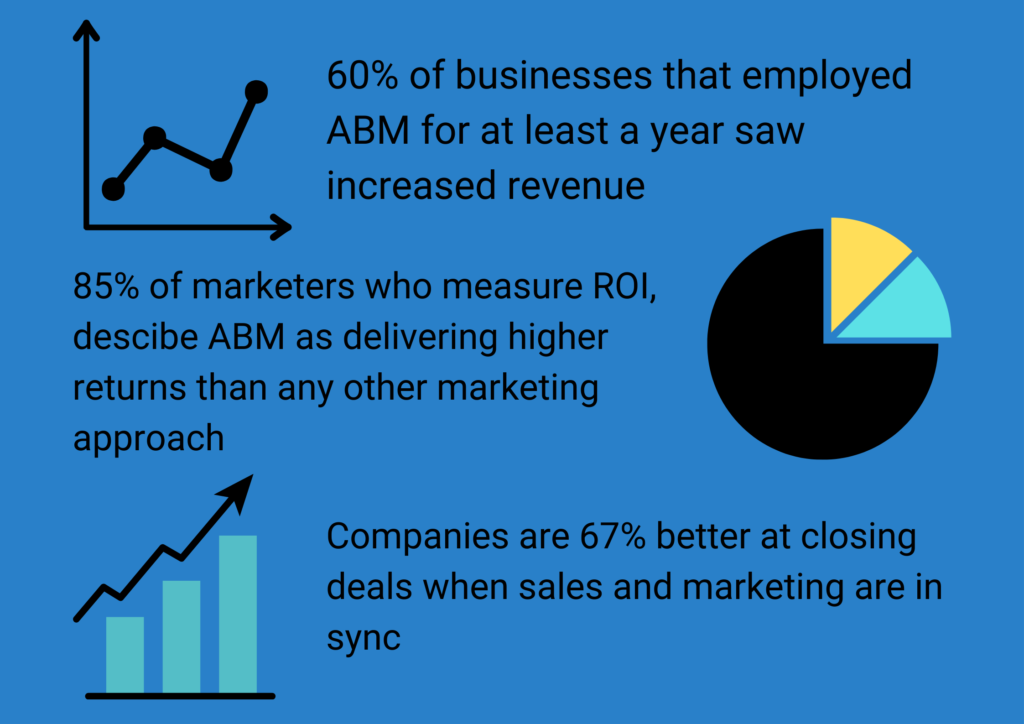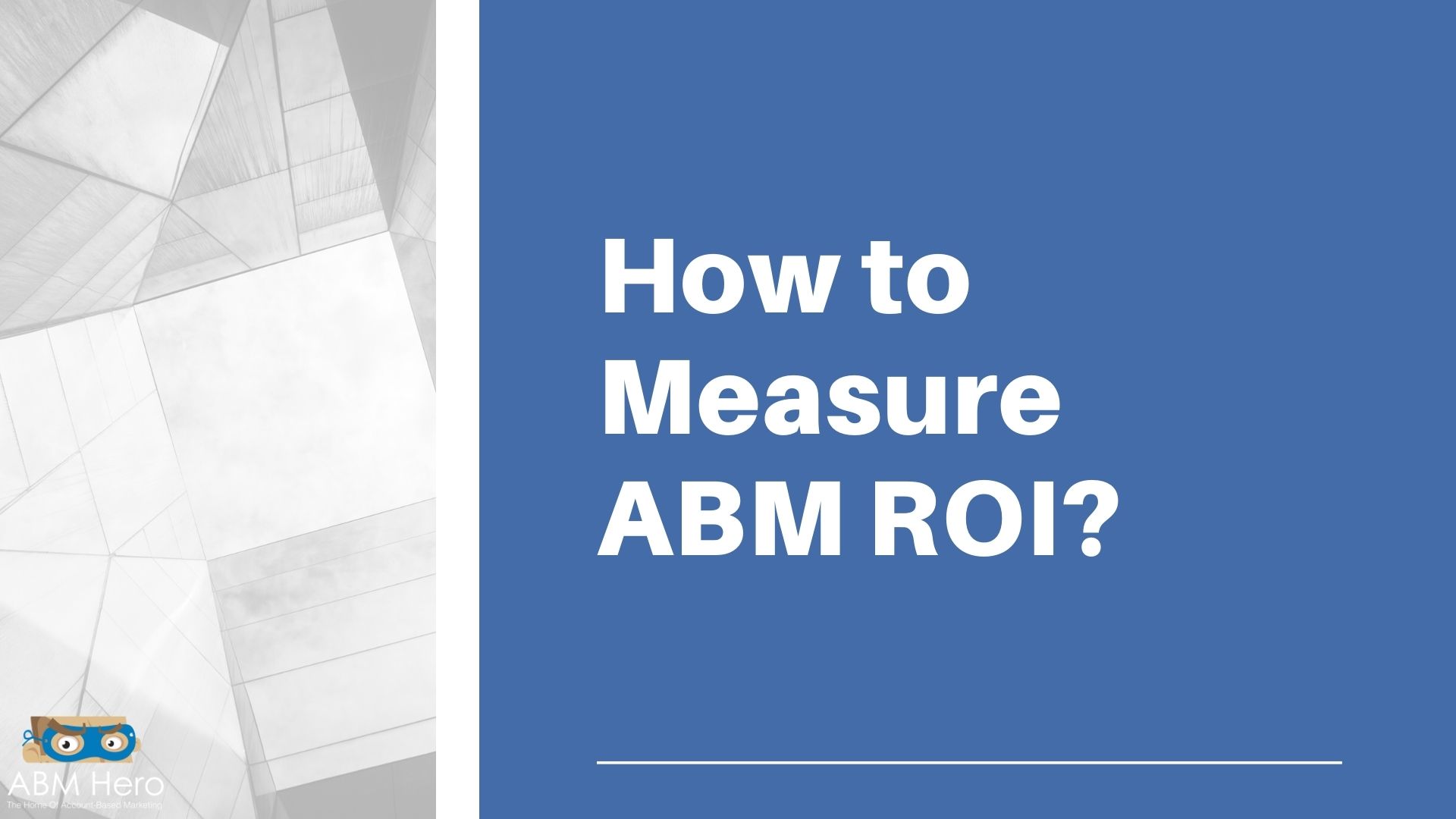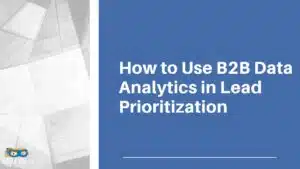Account-based marketing (ABM) is a strategy that focuses on key accounts and engaging them in personalized campaigns. Implementing an ABM program can be very effective in B2B industries, where sales cycles are long and decision-makers are often challenging to reach. Anyhow, as ABM is such a targeted approach, it can be tough to measure Return on Investment (ROI).
This article will help you measure how ABM influences the behaviour of your ROI and how you can guarantee of its movement. Are you all set? Let’s quickly jump in.
Understanding ABM ROI
Understanding the return on investment (ROI) of account-based marketing (ABM) is crucial for businesses to measure the effectiveness of their marketing efforts. ABM is a targeted marketing strategy that focuses on engaging specific accounts or target audiences that are most likely to convert into customers. To calculate ABM ROI, businesses need to track the revenue generated from ABM campaigns and compare it to the cost of the campaign. This can be done by setting clear objectives, defining metrics, and iterating on the strategy.
Benefits of ABM
ABM offers several benefits to businesses, including increased ROI, improved customer retention, and enhanced marketing efficiency. By focusing on a select group of high-value accounts, businesses can tailor their marketing efforts to meet the unique needs and interests of each target account. This personalized approach not only boosts the customer experience but also fosters trust and loyalty. Additionally, ABM enables businesses to optimize their marketing efforts by providing valuable insights into the performance of their campaigns.
Define Your Marketing Strategy Goals
It is important to clarify your goals and objectives when measuring your ROI using account-based marketing for several reasons. Understanding the buying process is crucial for measuring the effectiveness of ABM campaigns.
Without a clear understanding of what you are trying to achieve, it will be difficult to create an effective account-based marketing strategy.
There are various reasons why some companies get lost in translation when defining their company goals. One reason is that they may not have a clear understanding of what their goals are and how to achieve them.
Another reason is, they may not have the right tools or resources in place to help them translate their goals into a reality.
r, they may not have the dedication or commitment necessary to make their goals a reality. Whatever the reason is, companies who get off-track often find themselves struggling to achieve success.
Without a clear understanding of your goals and objectives, it will be crucial to measure your ROI accurately.
An ABM platform can help you identify the gaps between your goals and your current capabilities by providing you with a comprehensive view of your current potentials and how they compare to your goals.
This can help you to identify where you need to focus your efforts in order to close the gap between your current capabilities and your goals.
Similarly, an ABM platform can help you to track your progress over time so that you can see how your capabilities are improving and how you are closing the gap between your goals and your current capabilities.
In conclusion, without a clear understanding of your goals and objectives, you may inadvertently create a strategy not aligned with your overall business goals resulting to a lower ROI.
Establish a Fixed Cost for Every Marketing Campaign
As things go, you have clearly defined your goals and objectives. Marketing alignment between sales and marketing teams is crucial for the success of ABM. It’s now time to assign a fixed cost to every activity that happens in the marketing department.
There are several reasons why assigning a fixed cost to your account-based marketing campaigns is proposed. Doing so allows you to more accurately track and attribute the results of your campaigns. This is important because it allows you to see which campaigns are performing well and which ones are not, and make necessary adjustments accordingly.
Set a fixed amount on how much does long-form blog should cost or add a threshold on advertising expenses should be allocated to paid advertising costs, PPC, and monthly subscriptions to different ABM tools.
And, by knowing the fixed cost of your campaigns, you can effectively compare their performance to other marketing initiatives and make decisions about where to allocate your resources.
Eventually, having a fixed cost for your account-based marketing campaigns allows you to successfully manage your budget to avoid overspending.
Identify the Metrics that Matter to Your Target Accounts
There are a few reasons why it is important to identify the metrics that matter to your company.
For one, metrics can help you measure and track progress towards your business goals. They can also help you identify areas of improvement and potential areas of opportunity.
Either metrics can help you benchmark your performance against other companies in your industry.
Or metrics can help you make informed decisions about where to allocate resources and how to best invest in your business.
Consider that companies have different priorities, and thus different metrics they deem important.
In particular, a company that is focused on acquiring new customers may deem acquisition metrics to be more important than retention metrics.
Similarly, a company that is focused on profitability may deem profitability metrics to be more essential than growth metrics. It all depends on the specific company’s priorities.
There are two types of conversions that matter when choosing what metric to focus on: influence conversions and actual conversions. Influence conversions are those that happen before a user actually converts, such as when they add an item to their shopping cart. Actual conversions are those that happen after a user completes a purchase.
Both influence and actual conversions are important for they provide different insights as to how users interact with your website or app.
Influence conversions can give you an idea of how likely a user is to convert, while actual conversions can tell you how effective your conversion rate is.
The metric you focus on should depend on your goals. If you’re trying to increase the number of actual conversions, then you should focus on that metric.
If you’re trying to maximize the number of influenced conversions, then focus on the traffic that gets the most engagement.
Developing Detailed Account Personas
Developing detailed account personas is a critical step in ABM. This involves deep research to identify not just the demographic details but also the specific interests, challenges, and behaviors of key individuals within target accounts. By understanding the needs and pain points of decision-makers within these accounts, businesses can craft personalized messaging and content marketing strategies that resonate on a personal level, significantly increasing the likelihood of engagement and conversion.
Integrating Tools and Platforms for a Unified View
Integrating various tools and platforms is essential for an effective ABM measurement strategy. This includes marketing automation platforms, CRM systems, and analytics tools. By integrating these tools, businesses can capture and analyze the nuances of ABM campaigns, offering a comprehensive view of how target accounts interact with their brand across multiple channels. This centralized data enables businesses to gain a holistic understanding of account behavior, preferences, and engagement levels, enabling more targeted and effective marketing efforts.
Track Your Growth Through the Sales Funnel
There are possible reasons why measuring the potential impacts of account-based marketing campaigns on profitability can be tricky. Comparing ABM with other marketing endeavors can help measure its effectiveness.
As, account-based marketing campaigns can be difficult to isolate from other marketing activities that are happening simultaneously. This makes it hard to attribute any changes in profitability directly to the account-based marketing campaign.
Futhermore, account-based marketing campaigns often take a long time to generate results, so it can be hard to identify whether or not the campaign is ultimately booming.
Correspondingly, account-based marketing campaigns can be expensive, so there is always the risk that they will not generate a positive return on investment. All of these factors make it difficult to accurately measure the potential impacts of account-based marketing campaigns on profitability.
An account-based marketing scorecard can help you track your ROI by providing you with key insights into your marketing campaigns. By understanding which campaigns are performing well and which ones are not, you can make adjustments to optimize your marketing efforts.

In conslusion, the scorecard can help you identify any areas where you may be losing ROI, so that you can take steps to correct the issue. By tracking your ROI with an account-based marketing scorecard, you can ensure that your marketing campaigns are as effective as possible.
A scorecard can help you create a data set to see the progress in customer behavior by providing a way to track and compare customer behavior over time. Doing so, you can identify trends and patterns that may not be immediately apparent. This information can then be used to make informed decisions about how to improve customer satisfaction and loyalty.
Considering all of the facts, the steps to measuring ROI for your ABM campaigns may seem complex, but you will have a grasp on them along the way. By following these steps and using the right tools, you can guarantee that you are making the most out of your ABM campaigns and reaping the maximum benefits for your business.





